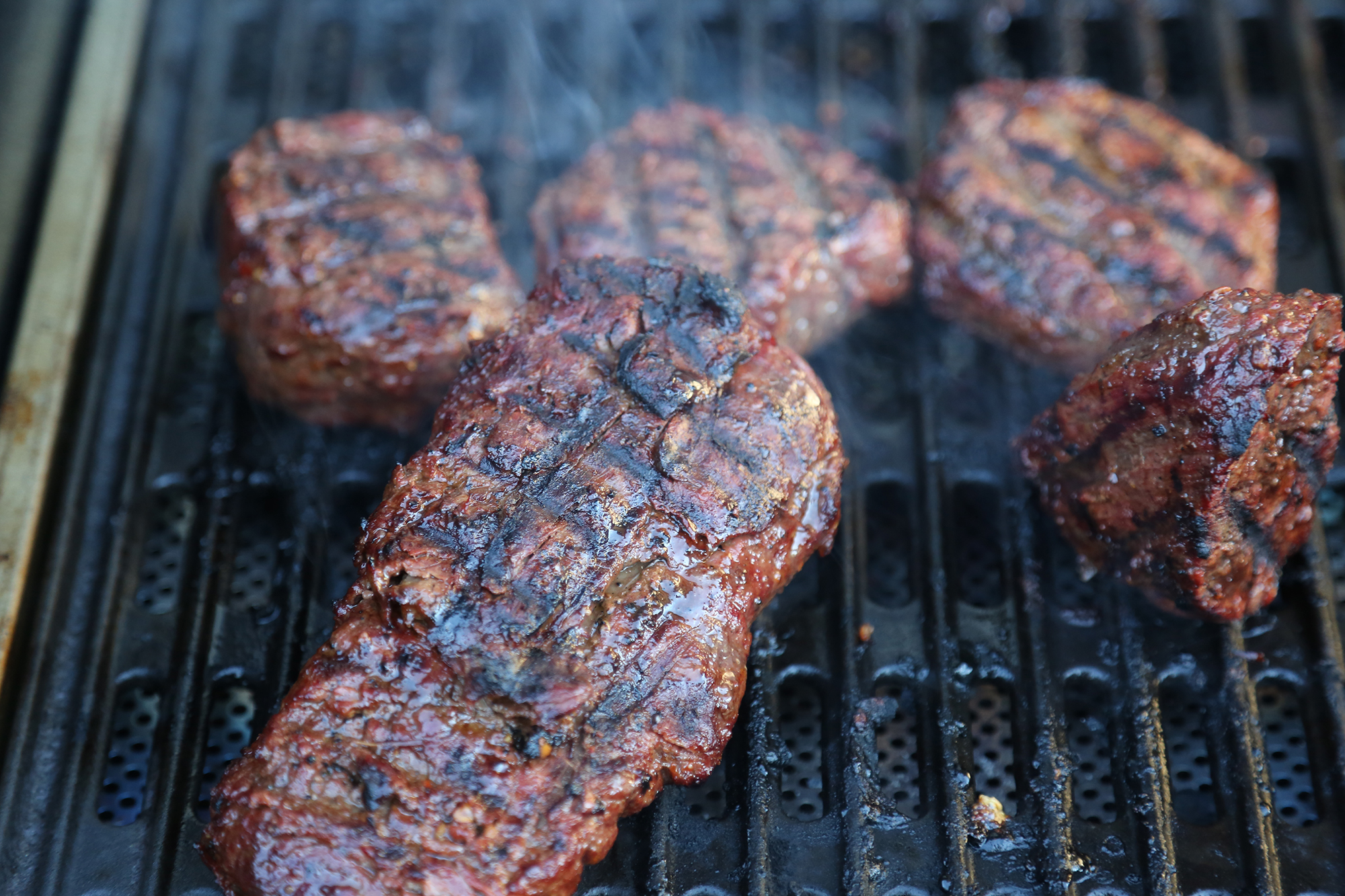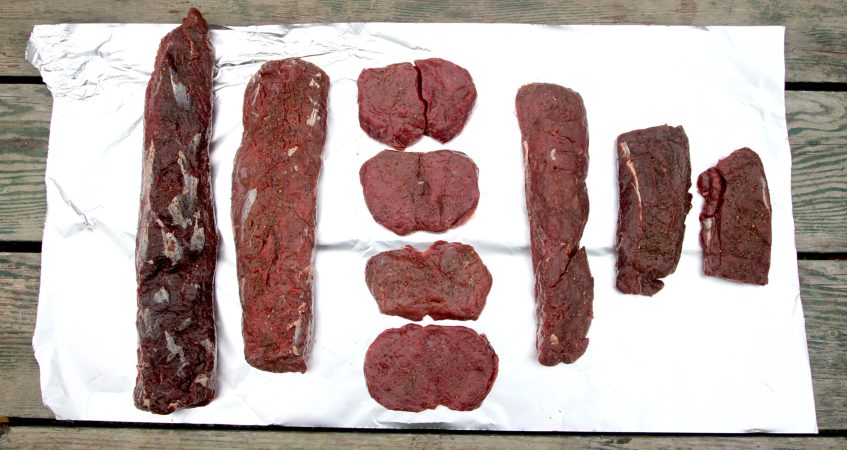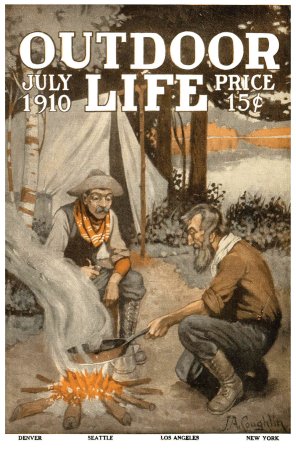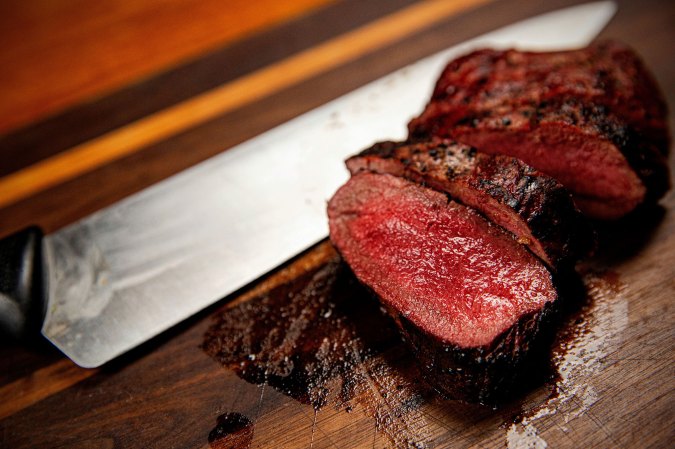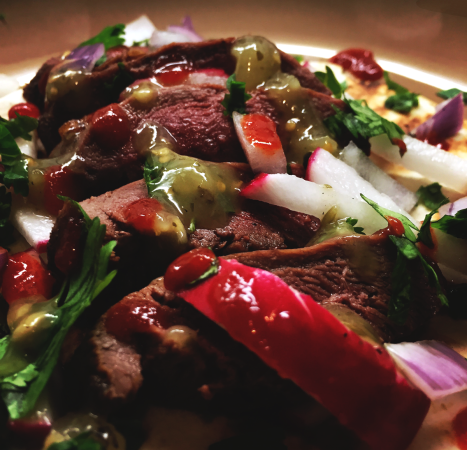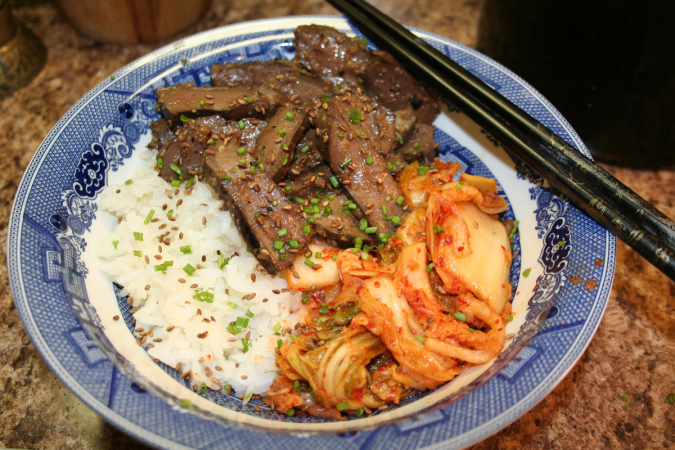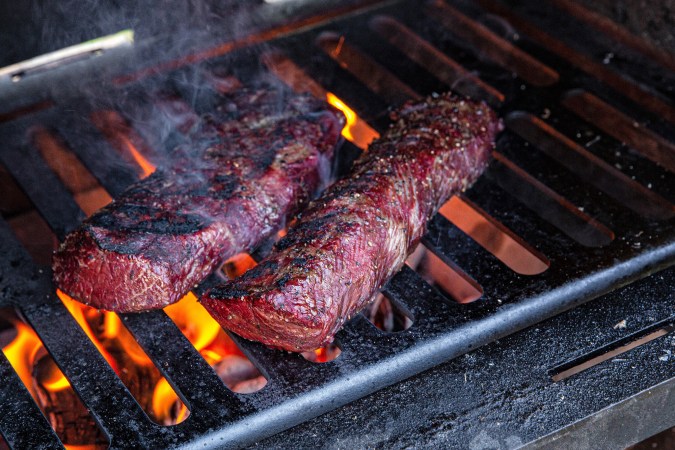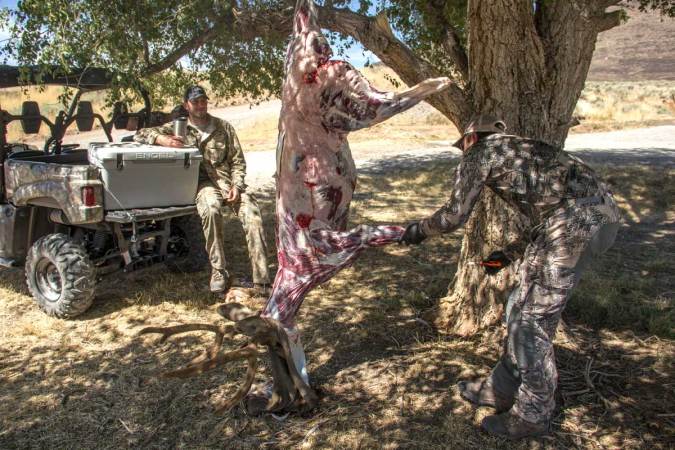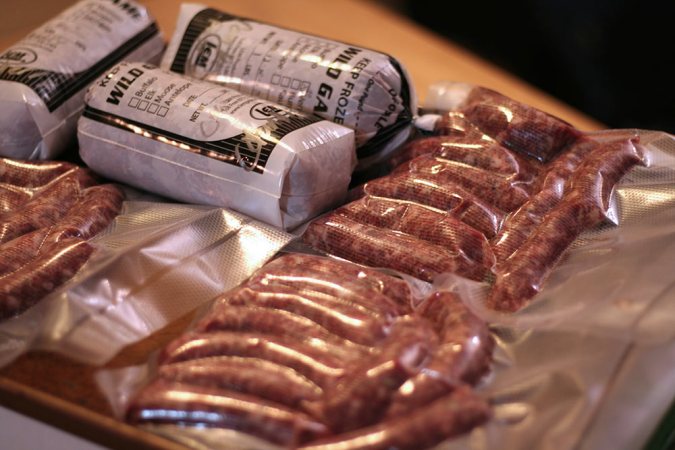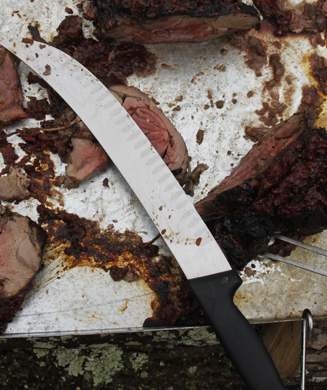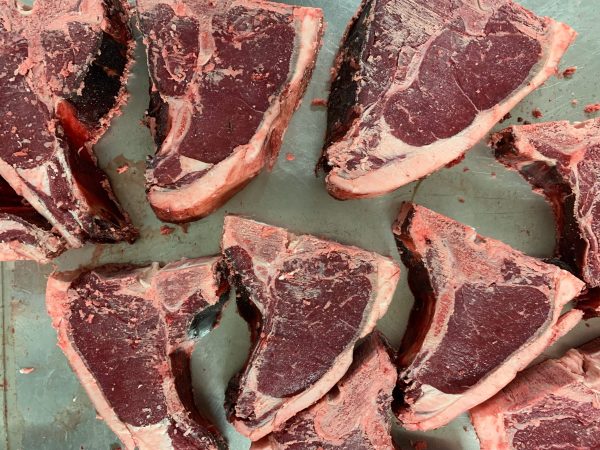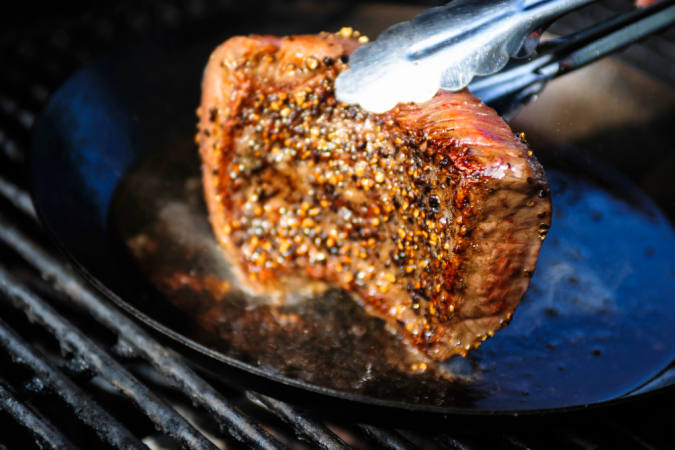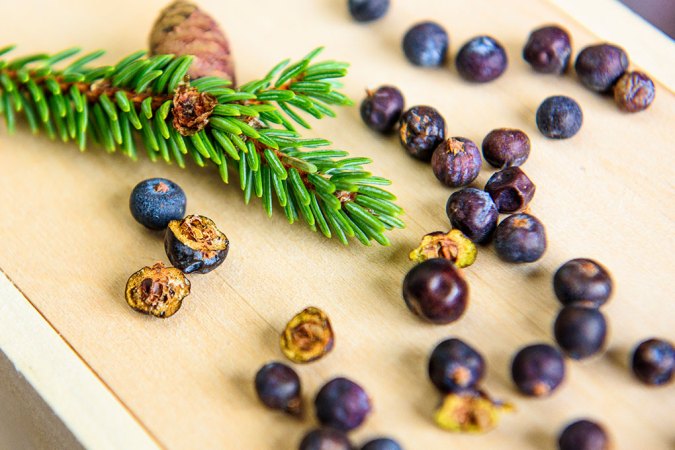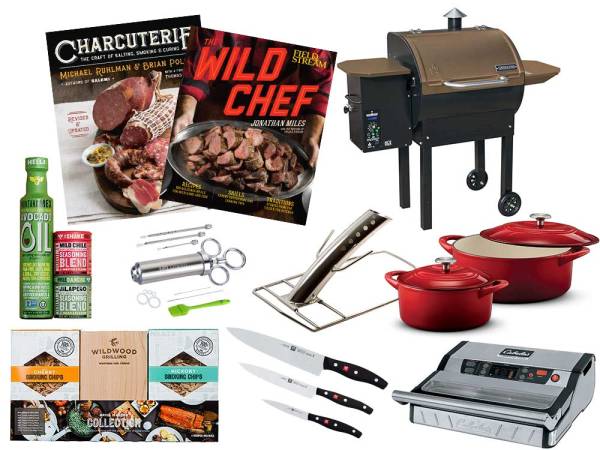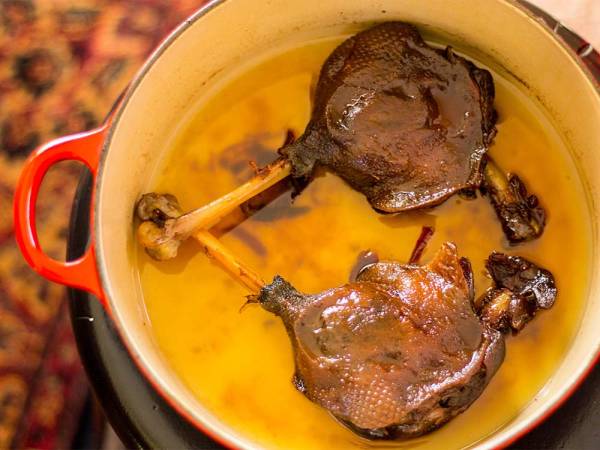The best meat I have ever tasted was Dall ram backstrap skewered onto green branches and cooked over an open fire. The only seasoning was a touch. After a challenging and successful hunt, it tasted heavenly.
What is the best eating wild game? Obviously, the question all comes down to personal taste. However, with the great diversity of meats I’ve tried over the years, I have come to some solid conclusions about which ones taste the best. To say I like wild game would be a massive understatement. I have hunted all over the world, from the high arctic to the Kalahari Desert in Africa. I have eaten and enjoyed the spoils of my adventures along the trail. Cooking and sharing wild meat is a passion of mine, and it’s also part of my everyday life. It sustains my family, and I continually strive to create new recipes each season.
So while I know that every hunter has their own list of the best wild game, I hope that you’ll also consider mine.
Mountain Sheep
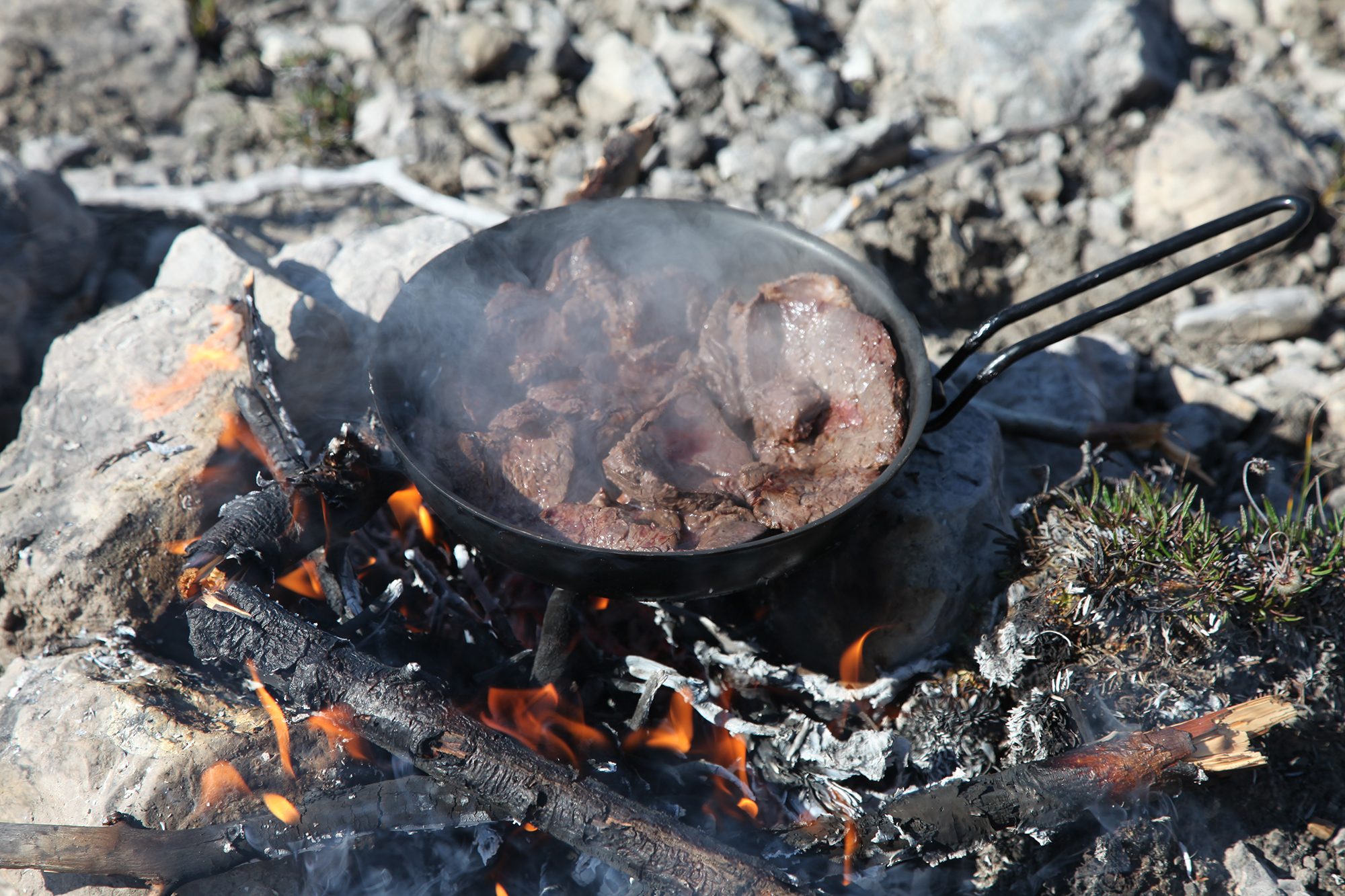
Any mountain sheep harvested during the warm months when the rich alpine grasses are still green is outstanding. Even a 12-year-old ram is as tender as a fish fillet, and the flavor is superb and inviting. My theory over the years is that the harder it is to harvest an animal, the better it tastes. Sheep are a prime example. They are earned, and every ounce will taste better for it.
Anyone who has backpacked sheep out of remote country can tell you that the back-breaking work is soon forgotten when a perfectly cooked steak graces your plate.
Many factors influence the flavor and tenderness of any game meat. The season is one of them. A sheep shot in late summer is at the top of my favorites list. However, a ram harvested during the rut in November quickly changes and would be comparable to mutton. The difference is night and day, but mountain sheep stay on the top of my list for best eats when it comes to meat. Part of the reason that sheep meat is so phenomenal is because it takes me back to that particular place and time when the sheep were hunted and harvested. The memories, adventure, and satisfaction of earning a ram have a lot to do with the enjoyment at the table.
Elk
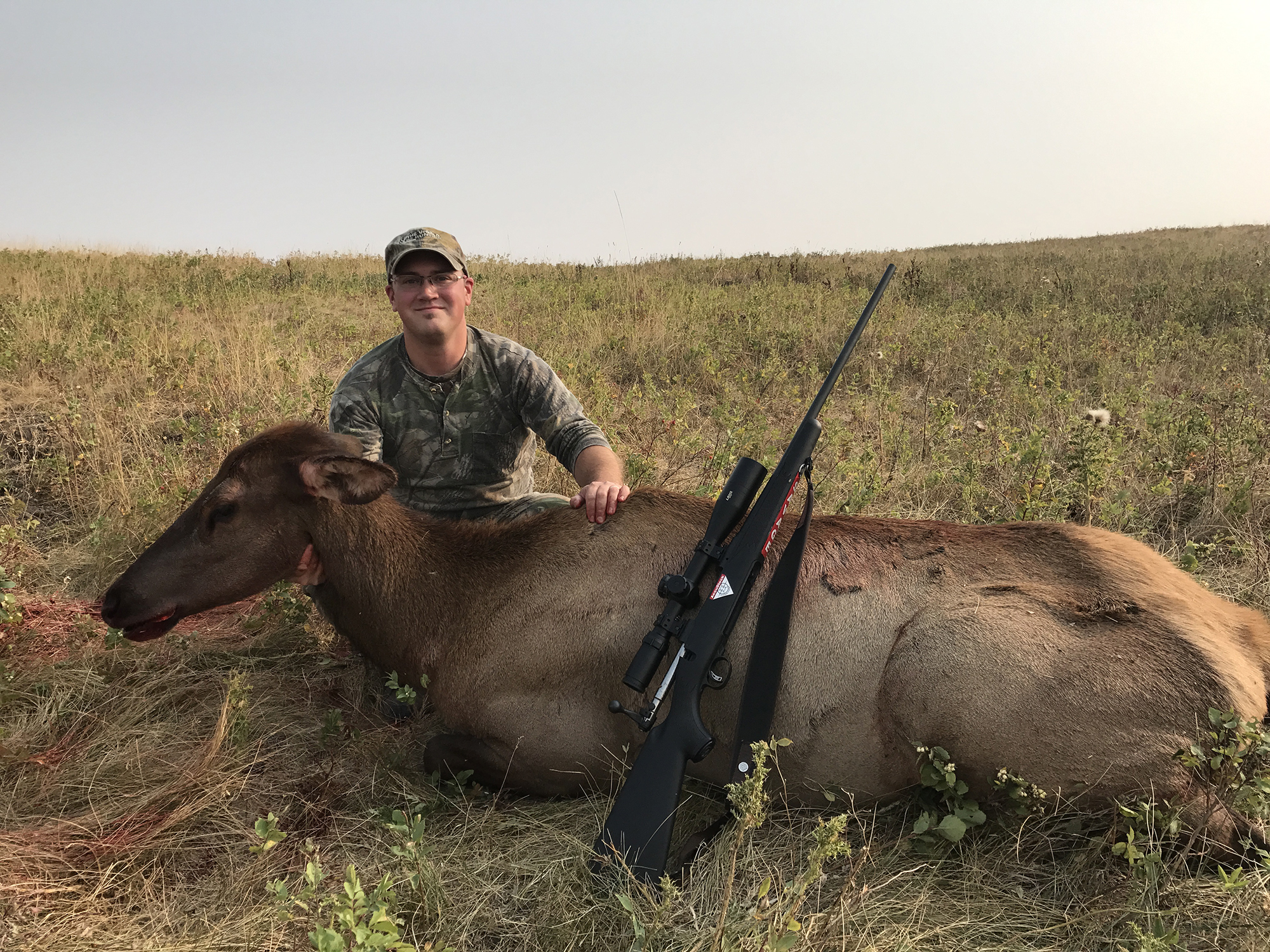
Elk would top the list for many hunters, strictly because more people have had the opportunity to try it without knowing there was something possibly better. Elk is a lean, fine-grained meat that has a sweet side. A cow elk is outstanding table fare. Not that a bull isn’t good, they just don’t finish at the level of an antlerless elk, which holds true for most species. The same is true for domestic meats; if we look at beef, cows and heifers are excellent table fare, and castrated males, or steers, rank highly as well. On the other hand, a big, old bull usually heads for the grinder and a big batch of bologna or something where the meat is emulsified.
Dr. Valerius Geist was a specialist on the biology, behavior, and social dynamics of North American large mammals and was an avid hunter. In his book Elk Country, Geist summed up what many hunters feel about incredible tasting, hard-earned meat, saying: “The elk roast in a hunter’s house is more than meat. It is a symbol and treated as such, no matter how it tastes. The meat of an elk from the mountains is a part of the mountains. It is a product of virgin wilderness soils, crystal clear waters, the flowers, grasses, and trees that grow there, and the rain and snow that falls. We are what we eat, and by eating the elk we become in a very literal sense, a part of those wild, clean mountains.”
Moose
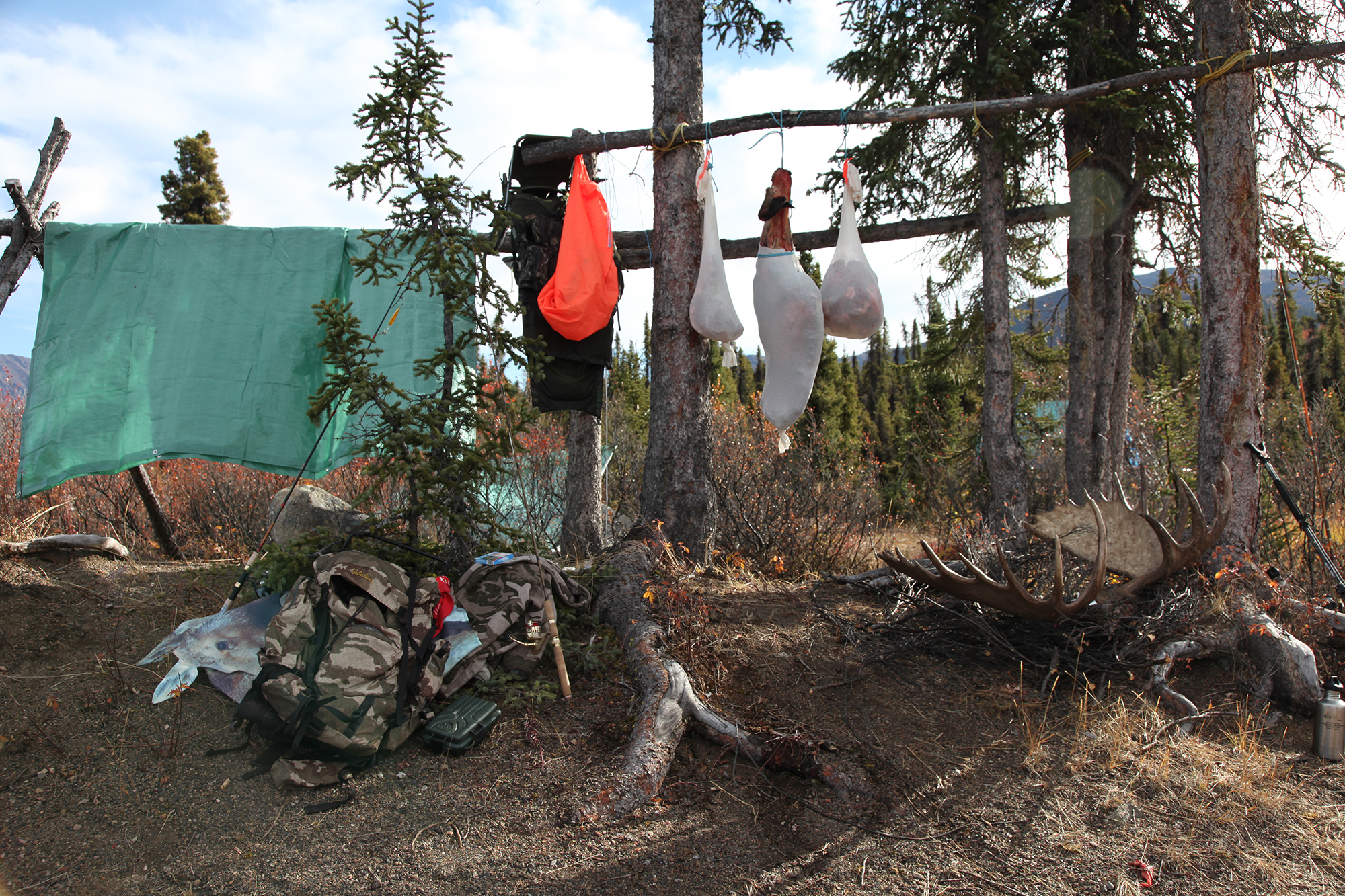
Living in Canada, I consider myself spoiled for having moose in my freezer every year for over two decades. Moose is long-grained meat with a unique and robust flavor. If you have ever tried moose, you will remember it. The flavor is earthy with a hint of the trees and shrubs it browses. Where moose are hunted regularly, they are highly sought after to fill the freezer. They rank high on the list for both quality and quantity. Early moose, in August and September, are the best. Late-season moose can be more challenging to keep tender. My theory is the moisture content of their diet—green leaves, aquatic vegetation, and other green plants—in the warmer months makes for better tasting meat. There is little to no moisture in their diet of dry twigs come November. With no open water, it would be challenging for moose to stay hydrated, especially if there wasn’t any snow. The animal is a product of its environment, and like sheep, moisture and a protein-rich diet make for the best-eating meat.
Read Next: Moose Steak Is the Best Steak You Will Ever Eat
Caribou
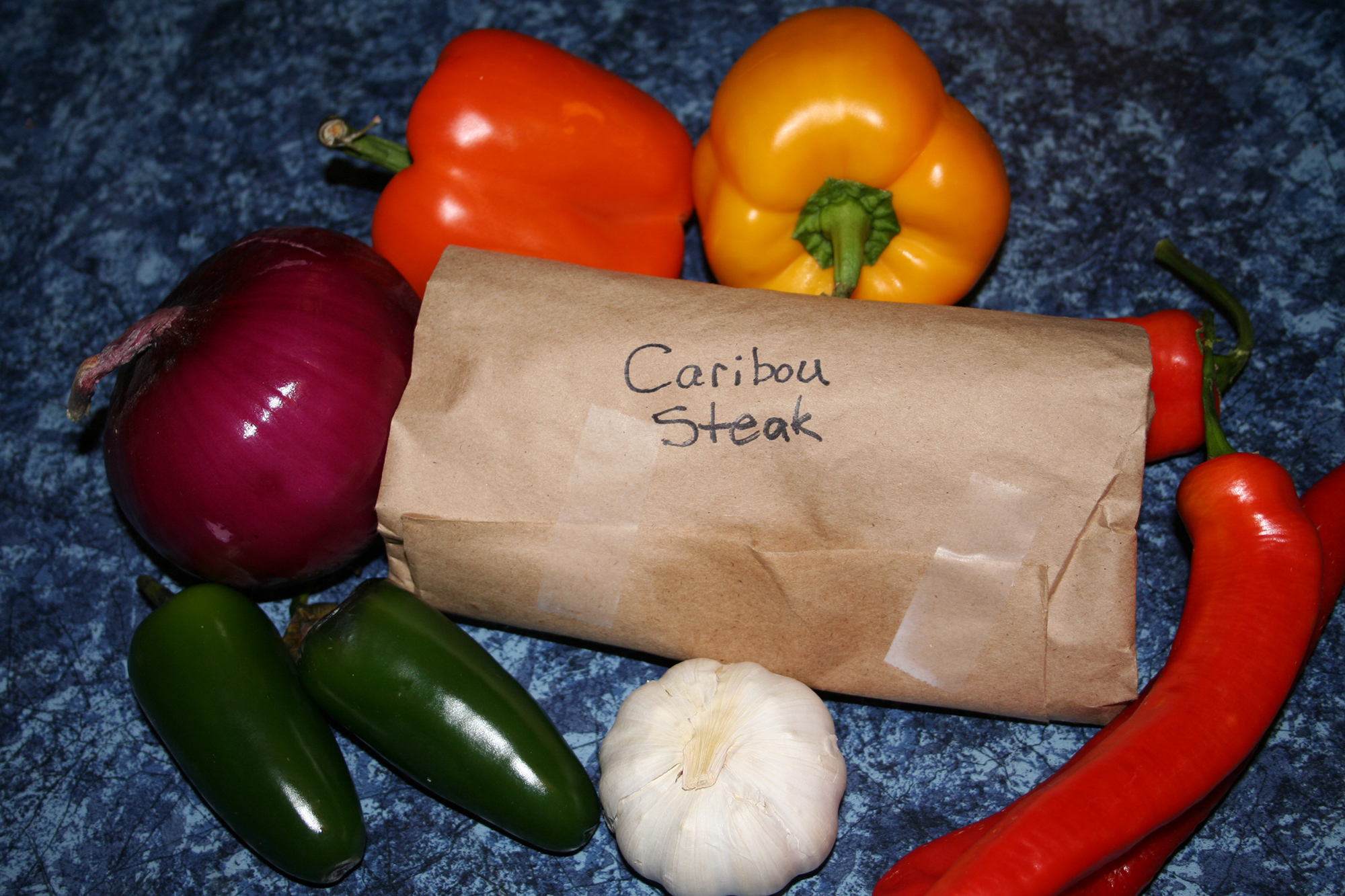
Having harvested four caribou species, I hope to hunt the woodland variety to complete the caribou slam. It is the meat I long for when there isn’t any left in the freezer. Caribou have fine-grained meat with little or no fat marbled into the proteins. Fat is stored on the back and under the skin, making the muscle lean. Fresh caribou cooked over an open fire is outstanding. A little back fat can be rendered in a frying pan to create a brown crust on the incredibly flavorful meat. A medium-rare center keeps the steak perfectly moist and tender. Caribou is one meat that should not be overcooked, as it changes in flavor and texture. Timing of a hunt is crucial, as a rutting bull is considered inedible by some. The meat takes on a musky flavor comparable to boar taint in a hog. Even cooking a rutting bull steak in the house will force you to open windows and question your sanity. In most cases, your hunting dog wouldn’t find it appetizing. I plan for late summer and early fall caribou hunts.
Muskox
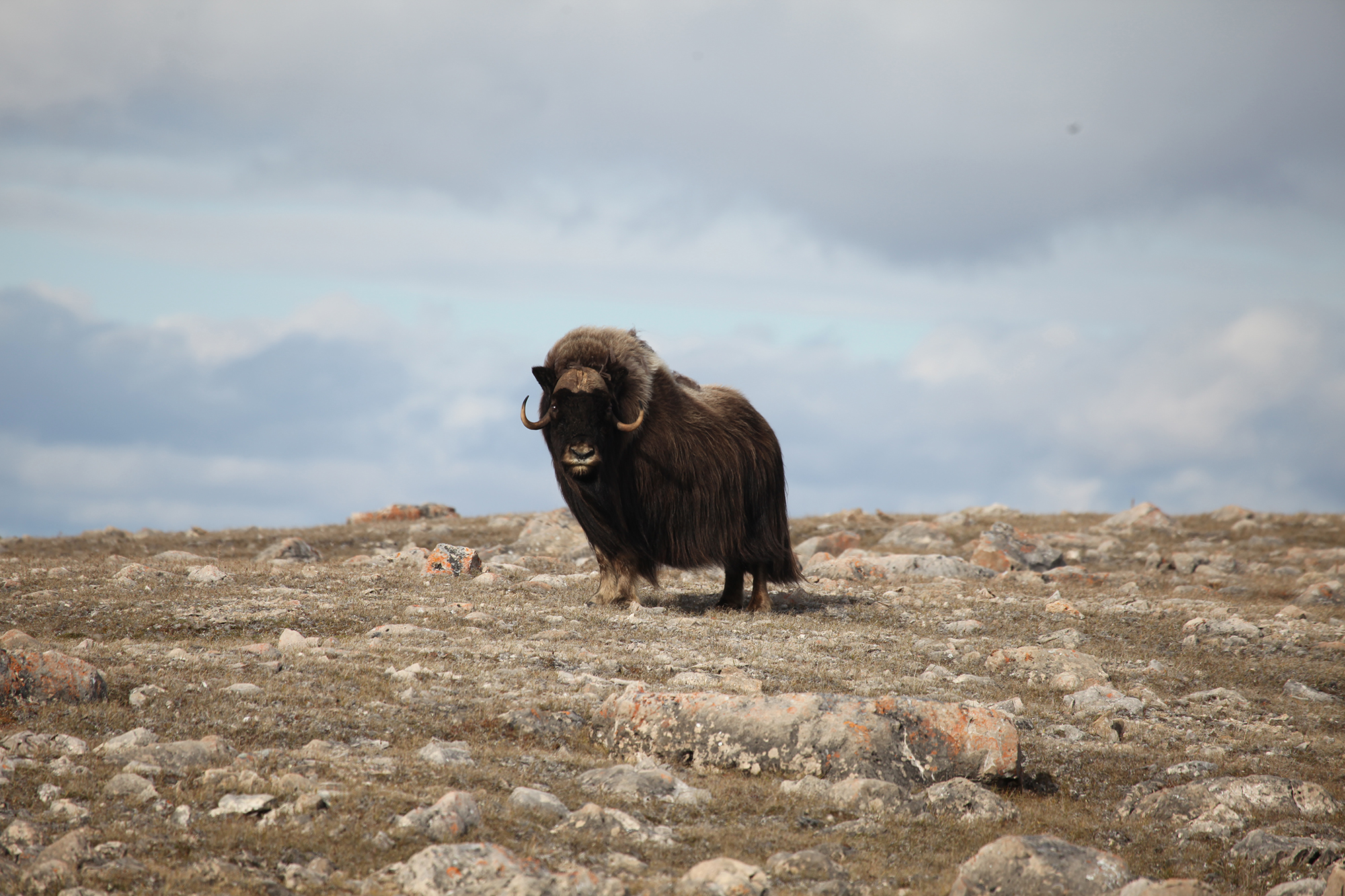
Muskox was hunted to near extinction when explorers looked for the Northwest Passage. Shiploads of muskox sailed back to England, where the meat was sold as polar beef. The grain is like beef and has an incredible flavor. I have shot bulls in late August during the rut and on spring hunts where it is -40°F or colder. The weather and season do not alter the flavor, which is always outstanding. The theory of “the harder they are to get, the better they taste” certainly applies to muskox country.
Mallards
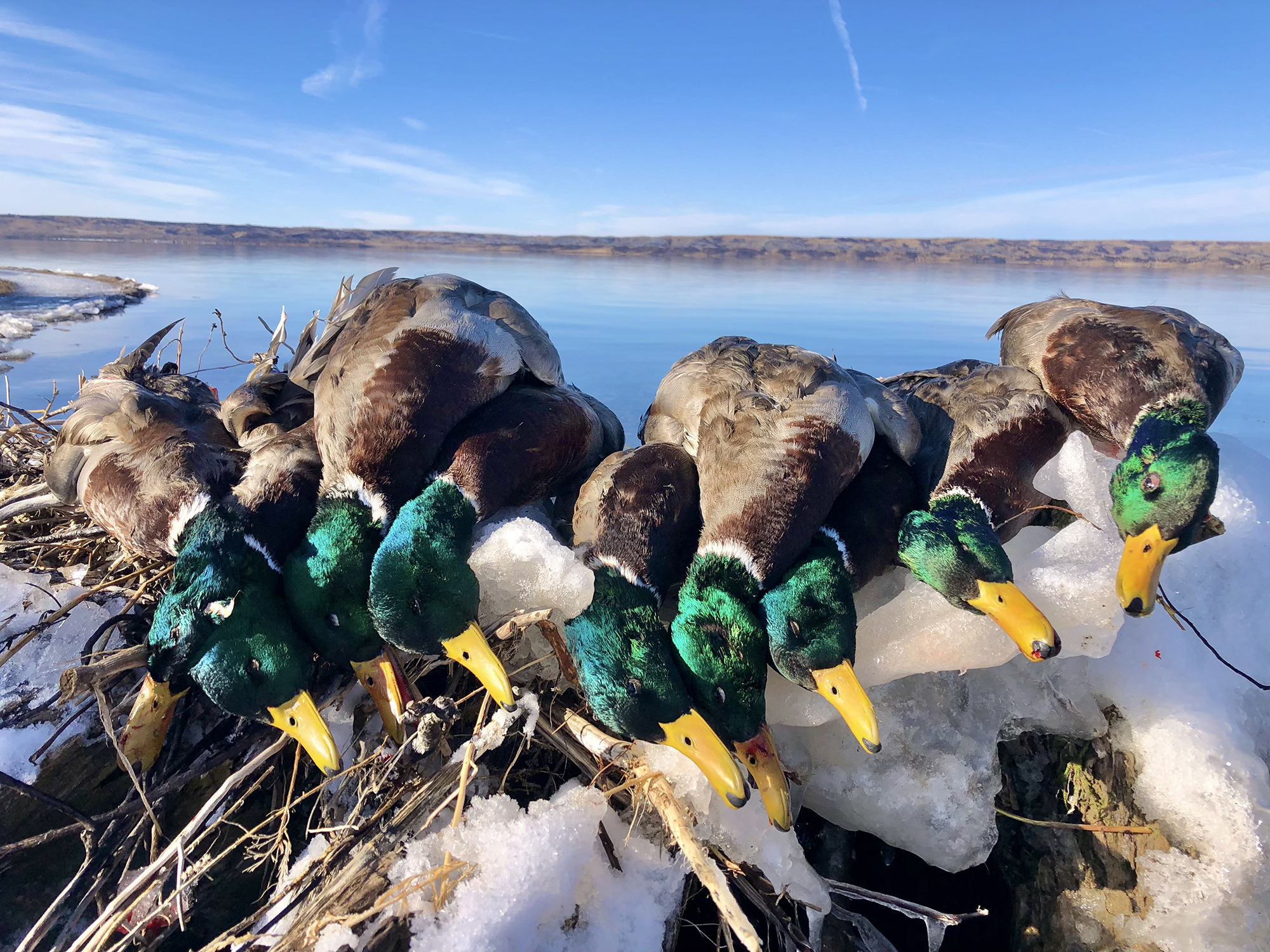
Waterfowl enthusiasts would scorn me if a fat, late-season mallard was not on the list. Duck fat confit is a culinary delight, and having a bird render fat while roasting adds flavor and moisture that is off the charts. Poking holes in the skin will ensure it gets crisp. Inexperienced waterfowl cooks might say that duck tastes too gamey or like liver. But that’s typically because the birds were not well cared for in the field or after the hunt. If you let your ducks soak in the mud and muck after they’re shot, they will taste like it. But well cared for and prepared mallard meet tastes rich, flavorful, and not at all like liver.
The only question is whether you should stuff it with dried fruit, breadcrumb stuffing, or wild rice. I never plan on leftovers and cook one bird for each person at the table.
Axis Deer
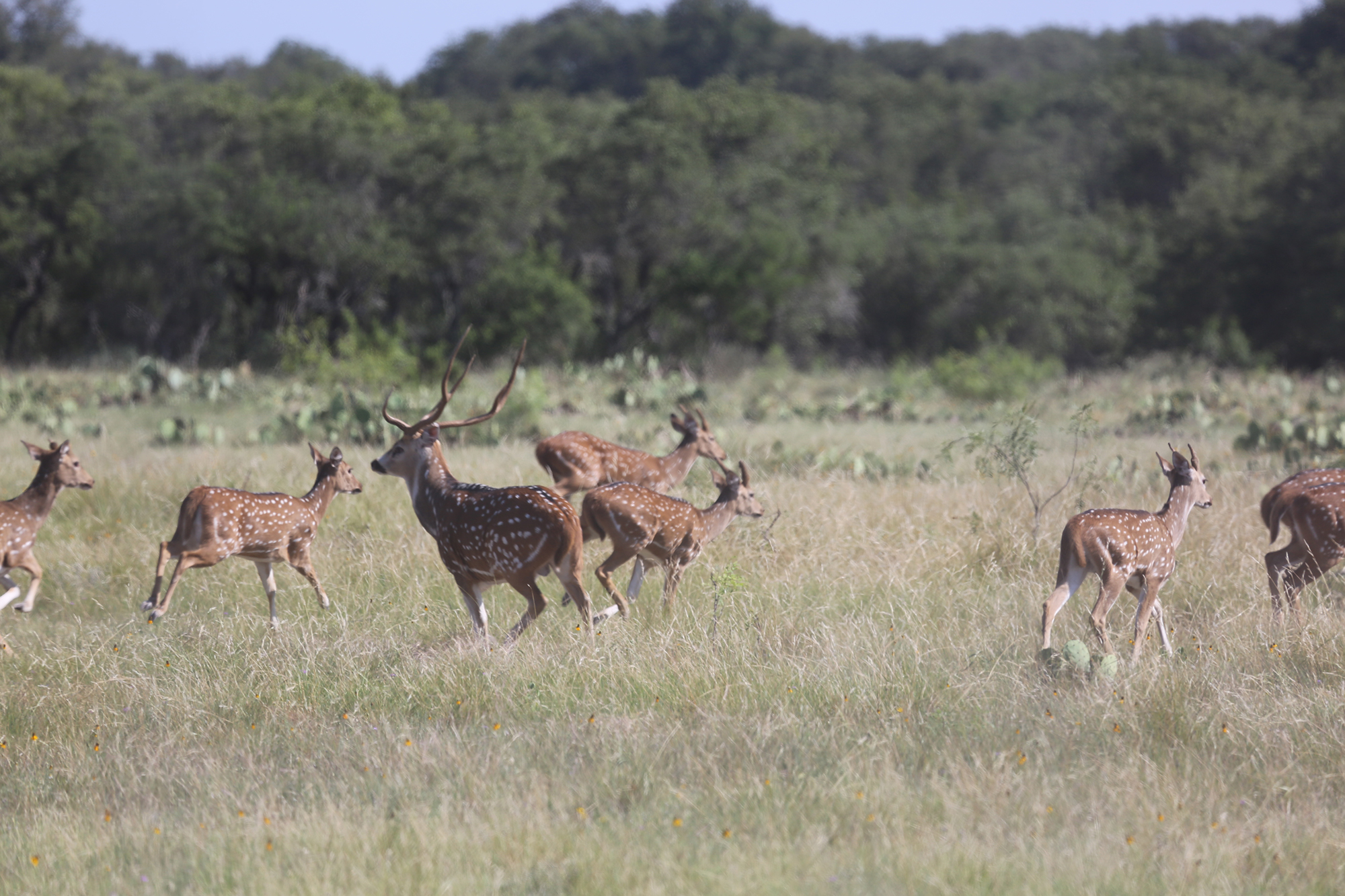
Anyone who has eaten axis deer meat can testify that it is darn good. It is tender and earthy without a robust gamey flavor. It is pale in color compared to other wild game meat. Axis deer are introduced in many places, including Texas and Hawaii, where they are now abundant and even problematic. Many exotics do not have scent glands as prominent as a whitetail deer. That is to say the sticky, stinky tarsal glands that are easy to find on our native deer.
Preorbital glands are predominant, and a theory exists that tamed-down or missing glands make for better eating. Blue bulls or nilgai antelope are other good examples of an exotic without a robust gamey flavor. They have been compared to a cross between elk and black angus cattle. (Part of the rationale for this is that the species is in the Bovidae family or wild cattle.) There are also seasons for oryx in New Mexico, and scimitar-horned oryx hunted in places like Texas taste incredible. (The exotics should have a separate ranking from native North American species to establish the best-eating wild game. Perhaps I’ll tackle that one another time.)
Ring-necked Pheasant
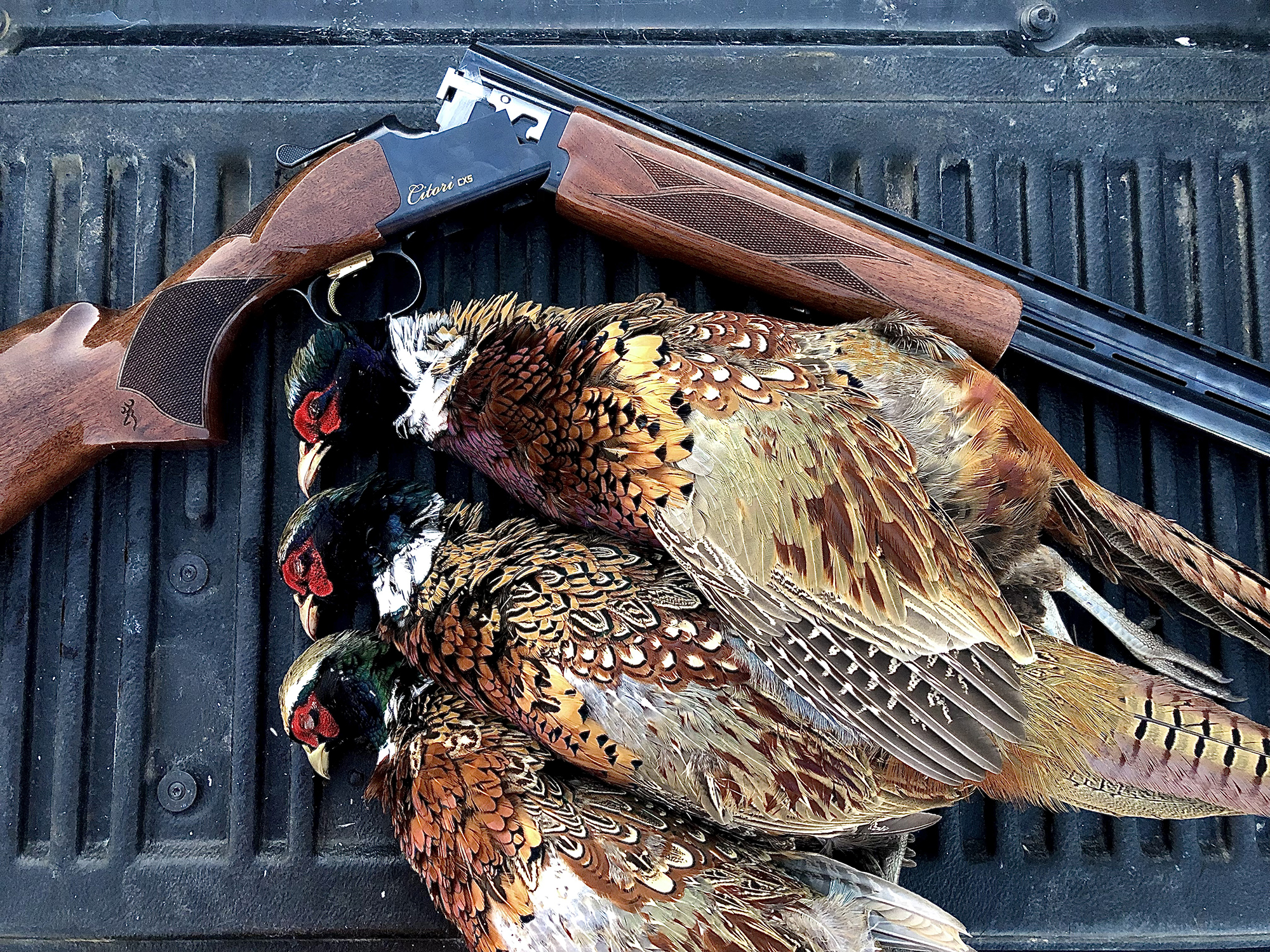
Ring-necked pheasants were introduced to North America over a century ago and continue to be a favorite amongst wing shooters. The bird boasts white breast meat, and even the legs and thighs are light in color. Grilled, deep-fried, smoked, stir-fried, or roasted, the pheasant offers diversity with the same flavorful proteins. Even finicky eaters will enjoy pheasant when cooked to maintain moisture. Pheasant needs to be cooked correctly to be enjoyed (don’t let it dry out), but it’s not an overly difficult bird to cook.
Read Next: Wild Game Schnitzel: A Recipe for Chicken-Fried Pheasant
Pronghorn Antelope
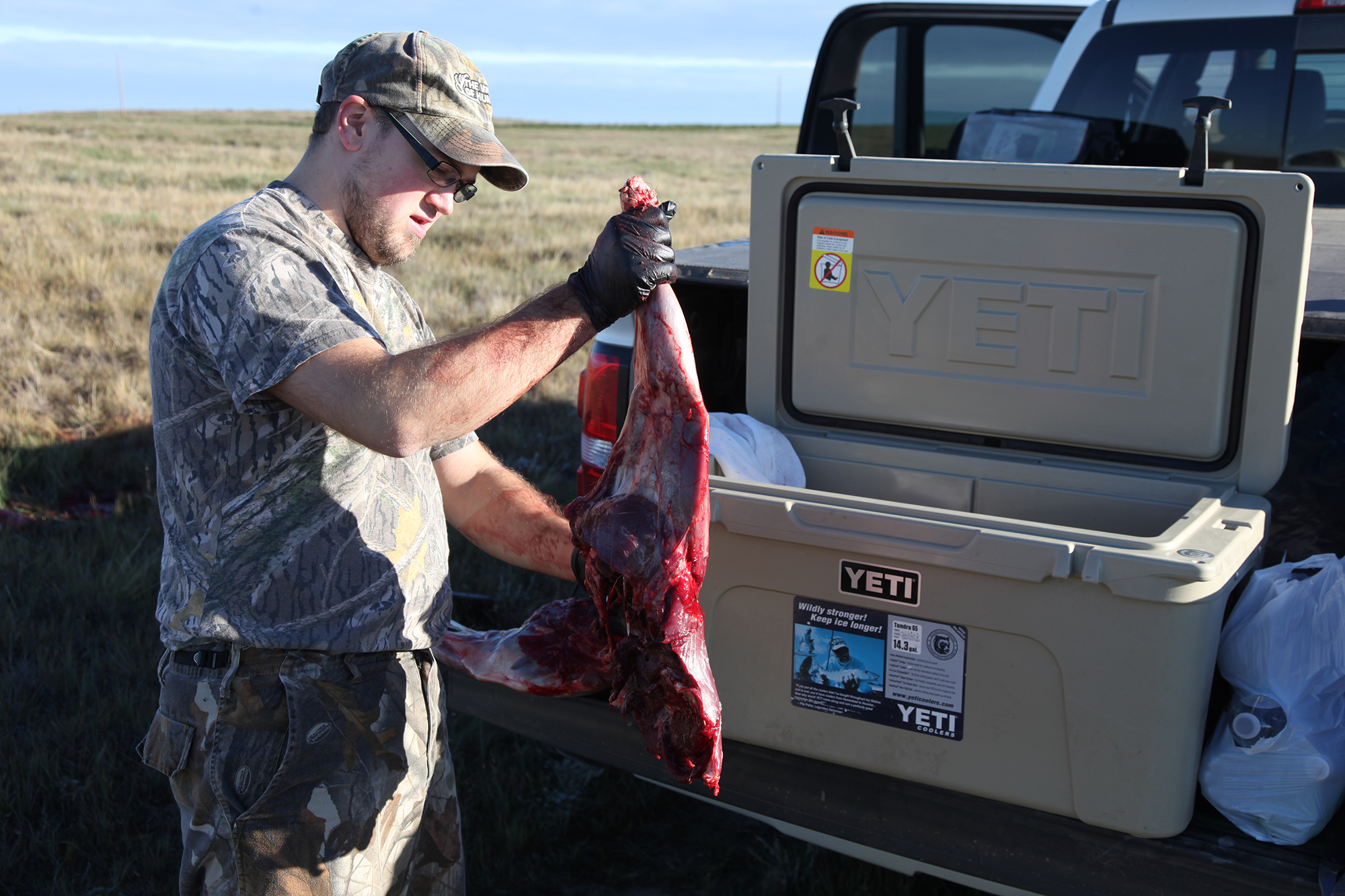
Pronghorn antelope are a great example of wild game that people either love or hate. A quick harvest, field dressing, and cooling of the carcass tends to produce the best-eating antelope. Making sure the hair does not contact the meat is also necessary for the best-eating meat. When handled correctly, antelope is like the veal of wild game, being rich and flavorful with sagey nuances of the habitat where it lives.
Whitetail Deer
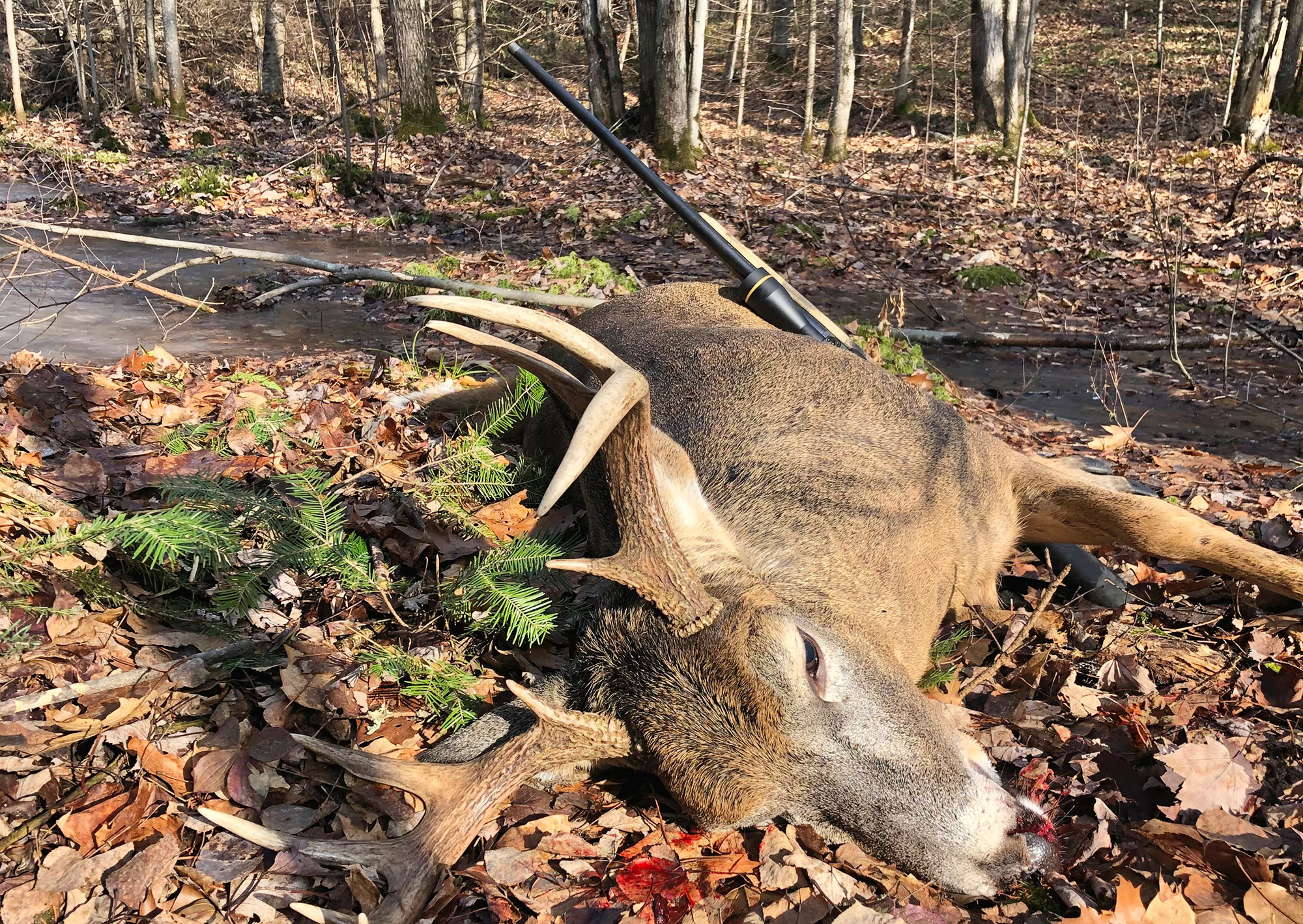
It would be a considerable oversight not to mention whitetail, which can be heralded as the most consumed wild game in America. A deer backstrap grilled to perfection is melt-in-your-mouth delicious. Deer does have that “gamey” flavor, but there are ways to tame the taste. Removing fat and bone marrow before cooking can drastically impact the final flavor, making the meat delicately flavored with an undertone of the deer taste that most hunters are used to. If you grew up eating deer meat, a whitetail backstrap from a plump doe, grilled to medium rare, is one of your favorite fall meals.
Read Next: Rutting Bucks and Bad Tasting Venison
Honorable Mentions: Predators
A couple of honorable mention species need to make the list. Cougar (or mountain lion) is intriguingly good. The meat is very light in color and sweet in flavor. It is often compared to pork for taste and texture. With a steady diet of deer and elk, why wouldn’t a big cat taste good? All North American cats fall into a category of good eats, for that matter. Lynx and bobcat are also light in color and highly palatable.
Black bears are another species that would top the list of game meats for some hunters. A fat fall bruin provides a powerhouse of a meal with exceptional protein, fat, and minerals. A bear fattened on clover and berries tastes as sweet as its diet. Utilizing the fat to render lard will inspire pastry chefs and provide a new appreciation for black bears.
Read Next: How to Eat a Spring Black Bear
Any predator, like a cougar or bear, has a risk of parasites, and the meat needs to be fully cooked for safe consumption. It is hard to compare an elk steak cooked medium-rare to a bear steak cooked well done. However, there are lots of recipes that allow you to enjoy meat that’s cooked to higher temperatures.
Handling Wild Game
How any wild game is handled will impact how it tastes. Hunters should look at all meat as a valuable commodity and use the best practices for handling and meat care (in short, keep it clean and cool). Aging can also play a role in the final flavors, but it is highly debated amongst the hunting community. Aging does dry the meat, firming up muscle tissue and making it easier to cut than the day it hits the ground.
The challenge with any wild game is cooking it properly. Wild or domestic meat overcooked or handled improperly will never taste as good as it should. It’s up to us to rise to the challenge and make any wild game taste like a new favorite.
